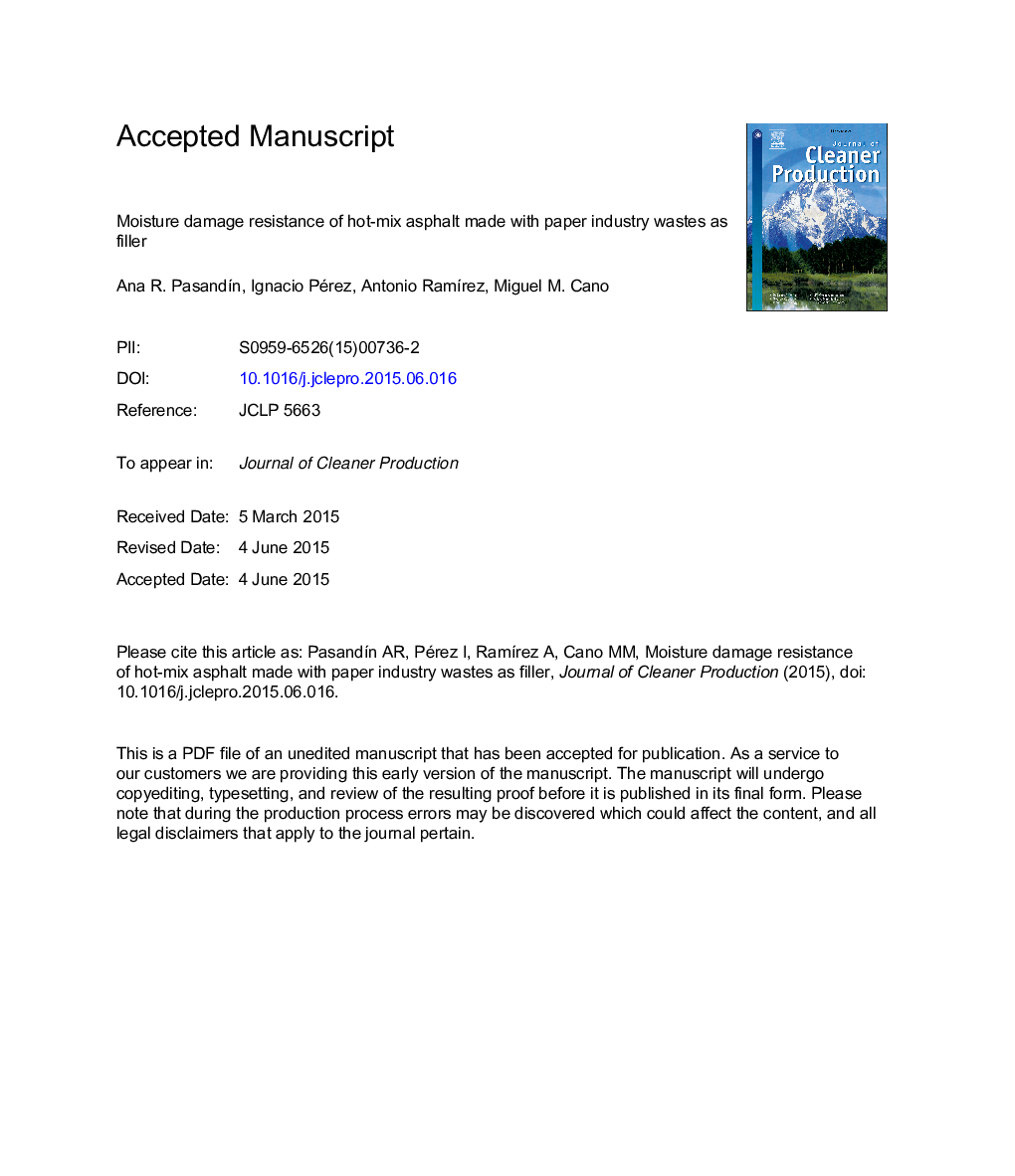| Article ID | Journal | Published Year | Pages | File Type |
|---|---|---|---|---|
| 10688093 | Journal of Cleaner Production | 2016 | 28 Pages |
Abstract
Certain paper industry wastes display high recycling potential. In this investigation, the feasibility of using green liquor dregs and biomass fly ash from the paper industry as filler in hot-mix asphalt (HMA) for road pavement construction is analysed. Particularly, the moisture damage resistance (i.e., water sensitivity) of an AC 22 base B50/70 G has been studied using the Indirect Tensile Strength Test at the Marshall mix design optimum asphalt content. The most important filler properties have been determined to study water resistance: filler water content, grain size distribution using light scattering analysis techniques, morphology using a scanning electron microscope (SEM), chemical and mineralogical composition using X-ray fluorescence (XRF) and X-ray diffraction (XRD) techniques, detrimental fines content using the methylene blue test and the stiffening effect of the filler in the mastic by determining the ring and ball (R&B) softening temperature and the bitumen penetration grade. Additionally, the Rolling Bottle method and Boiling Water tests have been conducted to analyse the asphalt-aggregate bond. A control filler (i.e., commercial limestone filler) was used to compare the results. Also the mechanical properties (stiffness and resistance to the permanent deformation) of the mixtures were studied. As a result, it can be concluded that dregs have poor water resistance. Additionally, fly ash displayed inadequate water resistance for HMA.
Related Topics
Physical Sciences and Engineering
Energy
Renewable Energy, Sustainability and the Environment
Authors
Ana R. PasandÃn, Ignacio Pérez, Antonio RamÃrez, Miguel M. Cano,
